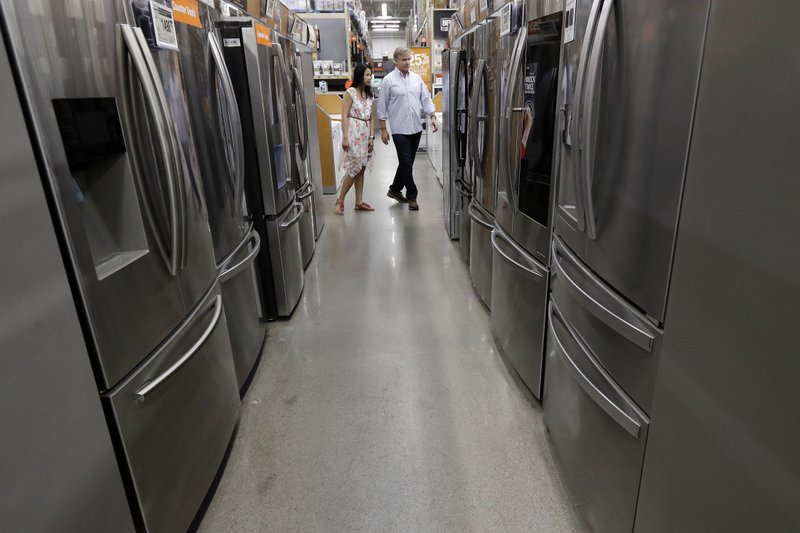
In this Monday, Sept. 23, 2019 photo shoppers examine refrigerators at a Home Depot store location, in Boston. (Photo: AP)
American consumers boosted their spending by just 0.1% in August, the smallest gain in six months, even as their incomes rose at a solid pace.
Personal income increased 0.4%, up from a small gain in the previous month, the Commerce Department said Friday. A measure of inflation preferred by the Federal Reserve was flat, but excluding the volatile food and energy categories, core prices ticked up 0.1%.
Consumers are a key driver of the economy as businesses have cut their investment spending and exports have slipped. August’s modest gain suggests the economy may slow in the July-September quarter compared with the beginning of the year. Consumer confidence is at historically high levels, but the Conference Board said this week that it slipped this month, in a sign that the US-China trade war is raising economic uncertainties.
The small increase in consumer spending was below most economists’ forecasts, and spending in July was revised slightly lower. In addition, a separate Commerce Department report showed that orders for long-lasting manufactured goods, such as autos and appliances, rose just 0.2% in August. And a key category that measures business investment fell, a sign that companies remain reluctant to invest in new equipment or to expand.
The disappointing data on consumer spending and business investment led many economists to slash their estimates for growth in the July-September quarter. Oxford Economics cut its forecast from an annual rate of 1.8% growth to just 1.3%. Economists at Morgan Stanley lowered theirs to 1.5% from 2.1%.
With income rising faster than spending in August, the savings rate rose to 8.1%, a sign that consumers have a healthy financial cushion and aren’t overspending even as the economy is in its 11th year of expansion. The savings rate fell to 3.2% in 2005, before the Great Recession.
The Fed’s preferred inflation gauge climbed just 1.4% in August compared with a year earlier, below its 2% target. The Fed aims to have some inflation as a way of avoiding deflation, a destabilizing fall in prices and wages. Yet inflation has mostly been below that level since the target was adopted in 2012.
Excluding food and energy, core prices rose 1.8% in August from a year earlier, the third straight increase. That is closer to the Fed’s target and could provide some ammunition to Fed officials who are reluctant to cut interest rates further. The Fed sliced its benchmark rate last week for the second time this year.
Adjusted for price changes, spending on goods rose, while spending on services fell. The biggest spending decline in services was for restaurants and hotels, the government said.


